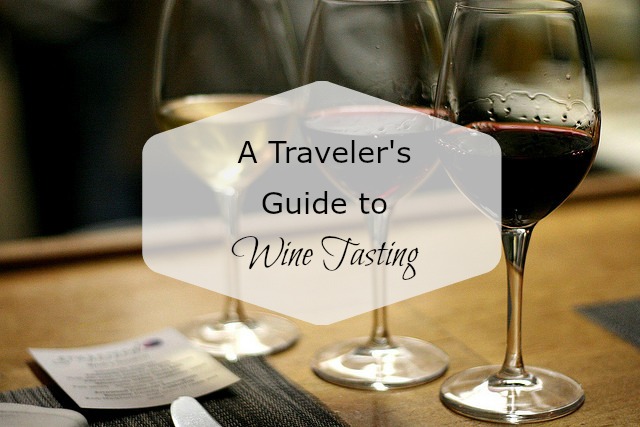 It is Monday evening in New York City and the sky is grumbling with thunder as rain runs down my apartment window. It is a dreary night in the Empire State-the kind of evening where you will find me curled up on my couch with a glass of red wine, my Macbook balancing on my lap and re-runs of Anthony Bourdain’s Parts Unknown playing in the background.
It is Monday evening in New York City and the sky is grumbling with thunder as rain runs down my apartment window. It is a dreary night in the Empire State-the kind of evening where you will find me curled up on my couch with a glass of red wine, my Macbook balancing on my lap and re-runs of Anthony Bourdain’s Parts Unknown playing in the background.
As I sit here with the taste of Malbec on my lips and my thoughts turning towards my flight to Colombia in less than 24 hours, I feel suddenly inspired to write a post about wine. It wasn’t until my mid-twenties did I learn to appreciate wine for all its complexities and subtleties. I remember as my dad would try in vain to teach me how to taste wine-he’d make a dramatic display of swirling his glass, whiffing the wine and then taking a painfully slow sip to determine the quality of the bottle. I’d stare at him smiling; thinking how silly he looked with his nose in the glass only to find myself doing the exact same thing years later while drinking Malbec in Argentina, swirling white wine in France’s Loire Valley or buying a bottle at my local bodega in New York City (let me take a moment here to thank my parents for all the tricks they gave me that I didn’t learn to appreciate until 25).
My appreciation of wine has evolved over the years from drinking out of Franzia boxes in college (and experiencing a top 5 worse hangover as a result) to visiting vineyards and learning how wine is made and aged. While I am still a novice in the world of wine; somehow I have managed to go from the girl who shamelessly used a phone app to choose bottles in-store to now recommending wines to friends at dinner. So, to the wine lovers and travelers who are venturing into the world (and looking forwards to toasting many glasses of vino along the way) this is your quick guide to wine tasting 101.
Check out the Legs (and Color too)
Next time you are drinking a glass of wine try tilting your glass and take note of the color of the wine and the viscosity of it (also known as the legs). Tilting your glass can provide clues to the wine’s age; if the wine holds its color near the edges this can indicate an older, vintage wine whereas a tilted glass of wine whose color fades and seems watery at the edges can mean a younger varietal. Similarly, when you tilt your glass or swirl your wine, notice the “legs” on the side of the glass, which can be an indicator of the sweetness and alcohol level in a wine. A wine with “legs” will tend to have a higher alcohol content made with sugary grapes from warmer climates (think Spanish or Californian wines).
Stop & Smell the Wine
I can still picture my dad’s nose in his wine glass as he inhaled his wine and took a stab at guessing the elements of his vino. Perhaps it was a full-bodied red wine with notes of plum and an end note of sandalwood; or maybe it was a rose with strawberry flavors and a light, almost vanilla flavor. One of the joys of drinking wine is appreciating the subtle notes that go into making a quality bottle. According to wine tasting guides, when smelling wine you are trying to identify the primary, secondary and tertiary aromas. Primary aromas tend to come from the grape, secondary aromas will be come from wine making, while tertiary aromas come from the aging process and tend to be reminiscent of wood and oak.
Taste & Enjoy
When it comes to wine, it is said that two things make up the taste: flavor and structure. In short, flavor is similar to the process of smelling your wine; taking your time to taste each element of the wine you are drinking and trying to solve the puzzle of what went into that particular bottle. Structure points to the elements of the wine-from alcohol level, sweetness, body, tannin and acidity. When tasting your wine, the taste is usually broken into 3 parts: start, mid-palate and finish. Essentially each sip of wine will hit your palate in waves with the top notes of the flavors hitting your tongue first and the other flavors washing across your taste buds. If you wine is drier, it tends to have more tannins (think deep reds such as Malbecs) vs. if your wine is sweeter like a rose or prosecco.
There are countless ways to enjoy a glass of wine and of the many tips and tricks to wine tasting (there is, after all, a whole study to becoming a wine purveyor) this barely scratches the surface. Yet, during my travels-from Argentina to Panama, England to France-I have stretched my little wine tips far and have learned to not just drink wine, but appreciate it (thanks, Daddy). Check out Wine Folly’s great guide to wine tasting below!
This post was contributed by Tesco Wine, an online shop where people can easily find amazing wine deals and purchase wine by the case (in case you have an obsession with Argentinean Malbecs and evenings watching Bourdain, like yours truly!).



Fantastic article!!!